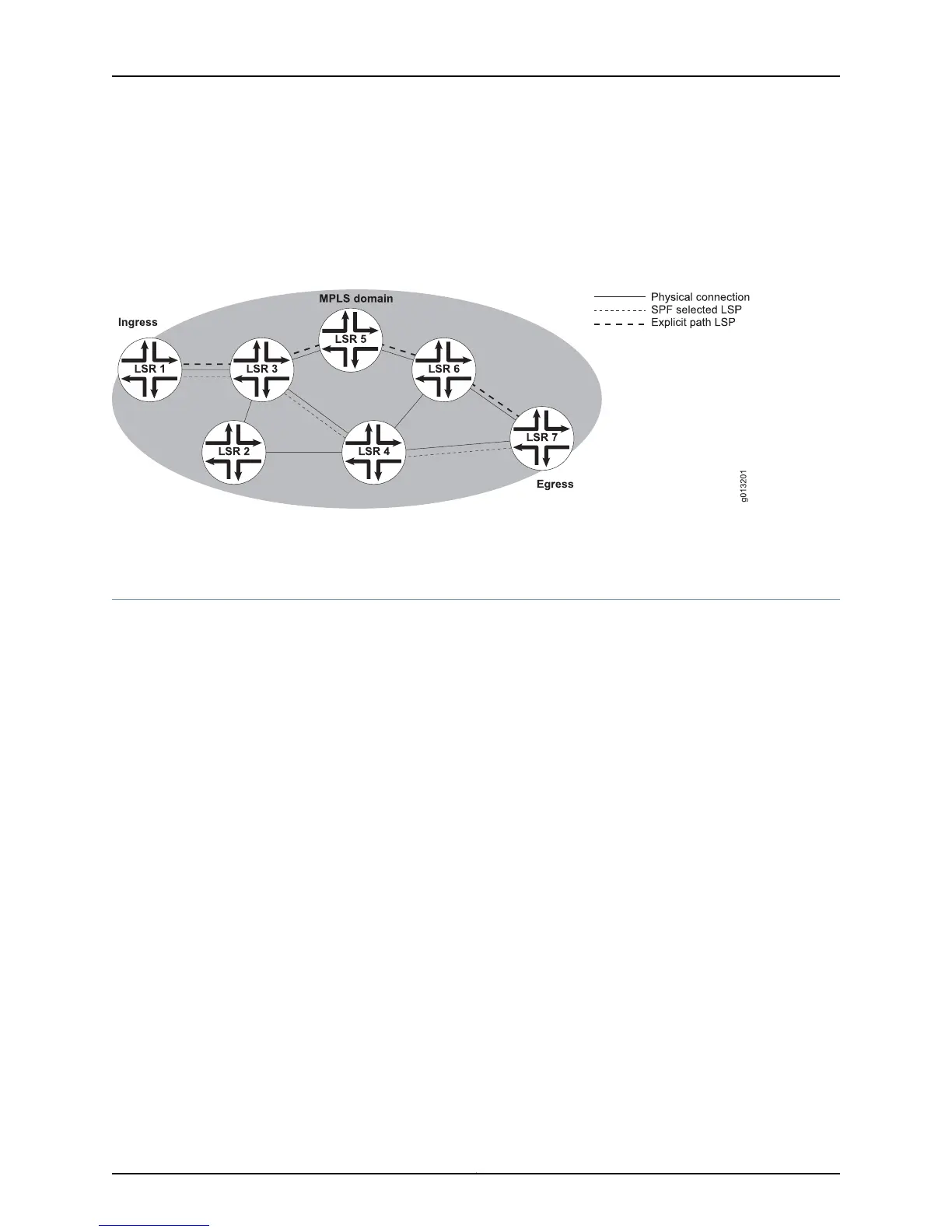Suppose LSR 5 and LSR 6 are underused and LSR 4 is overused. In this case you might
choose to configure the following explicit path because it forwards the data better than
the hop-by-hop path:
LSR 1 –> LSR 3 –> LSR 5 –> LSR 6 –> LSR 7
Figure 55: Explicit Routing in an MPLS Domain
Related Topics Configuring Explicit Routing for MPLS on page 286•
MPLS Interfaces and Interface Stacking Overview
The JunosE implementation of MPLS employs MPLS major, minor, and shim interfaces.
MPLS Major Interfaces
An MPLS major interface must be stacked on a layer 2 interface to send or receive MPLS
packets on that interface. Each MPLS major interface exists in a particular virtual router.
MPLS major interfaces can use the platform label space or the interface label space.
Which type of label space is used by the major interface is determined by the layer 2
interface on which the major interface is stacked. If the layer 2 interface is an ATM AAL5
interface, the major interface uses the interface label space. For all other layer 2 interface
types, the major interface uses the platform label space.
When an MPLS packet arrives on the MPLS major interface, MPLS looks up the label of
the received MPLS packet, the in label, in the MPLS forwarding table that is associated
with the major interface. For major interfaces using the platform label space, the lookup
is in the MPLS forwarding table of the VR. For major interfaces using the interface label
space, the lookup is in the MPLS forwarding table of the major interface.
You use the mpls command in Interface Configuration mode to create or remove MPLS
major interfaces. Some other commands create an MPLS major interface if it does not
already exist.
You can configure the following attributes for each MPLS major interface:
•
The administrative state, enabled or disabled, configured with the mpls disable
command.
Copyright © 2010, Juniper Networks, Inc.236
JunosE 11.2.x BGP and MPLS Configuration Guide

